Smoked salmon has a wonderfully rich flavor and is infused with the perfect balance of sweet and salty. This recipe can also be customized to dust with your favorite seasonings!
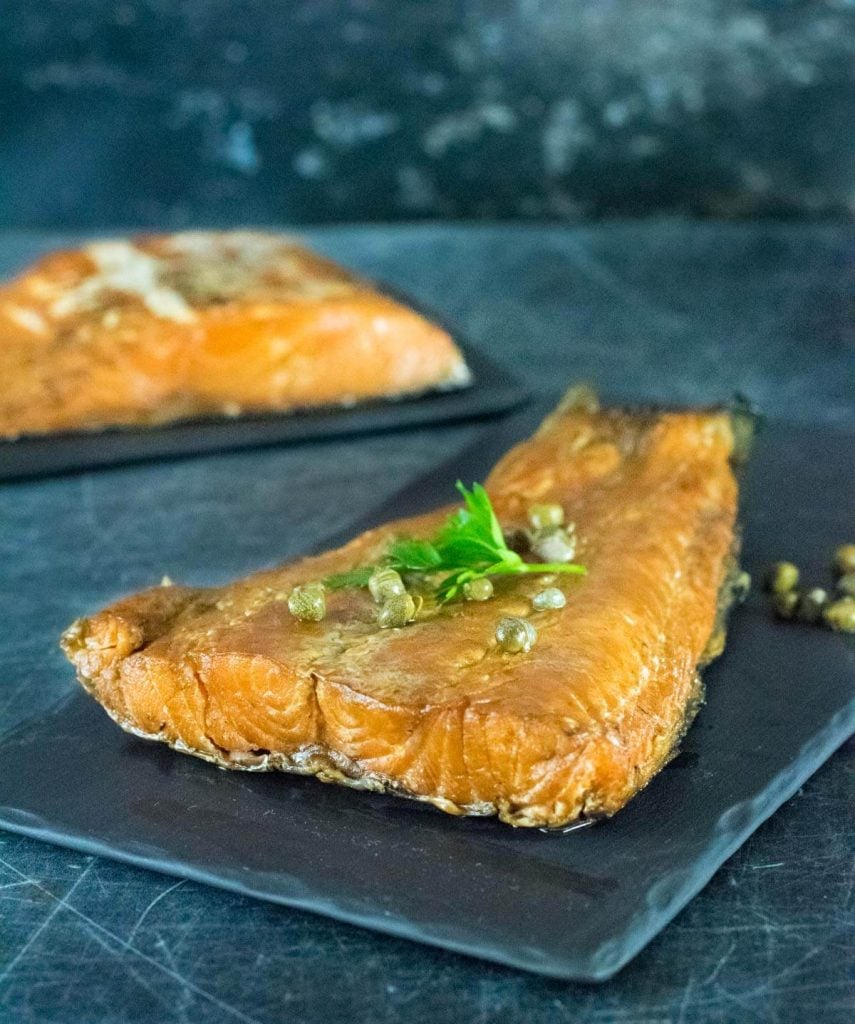
Best Salmon for Smoking
Wild-caught salmon has the best flavor, but if price or availability limits you, frozen farmed salmon can be used with decent results as well. Make sure to give it time to properly thaw out of course. Many people smoke the entire fillet, I personally like to portion it into smaller sizes prior to smoking. It fits into my smoker easier this way and it is the appropriate size for storage. Regardless which way you choose, make sure you leave the skin on.
Salmon Smoking Equipment
- 2 baking pans - One for holding the fish while curing, the second will be used to press it.
- Plastic wrap - Plastic wrap holds the cure tightly to the fish and ensures it cures evenly.
- Weights - You will need some form of weights to press the salmon while it cures, just grabbing extra cans from your pantry works perfectly. You just need a couple of pounds, don't go crazy.
- Smoker - Gas, electric, or charcoal smokers work fine. Be sure to also have the appropriate smoking wood for your style of smoker.
- Probe thermometer - The easiest way to know when your salmon is done is to keep a thermometer inserted into the thickest part of the meat while smoking.
Best wood for smoking Salmon
I think fruit woods such as apple, or cherry, are great for smoking salmon, however, Alder wood is the traditional option most frequently used.
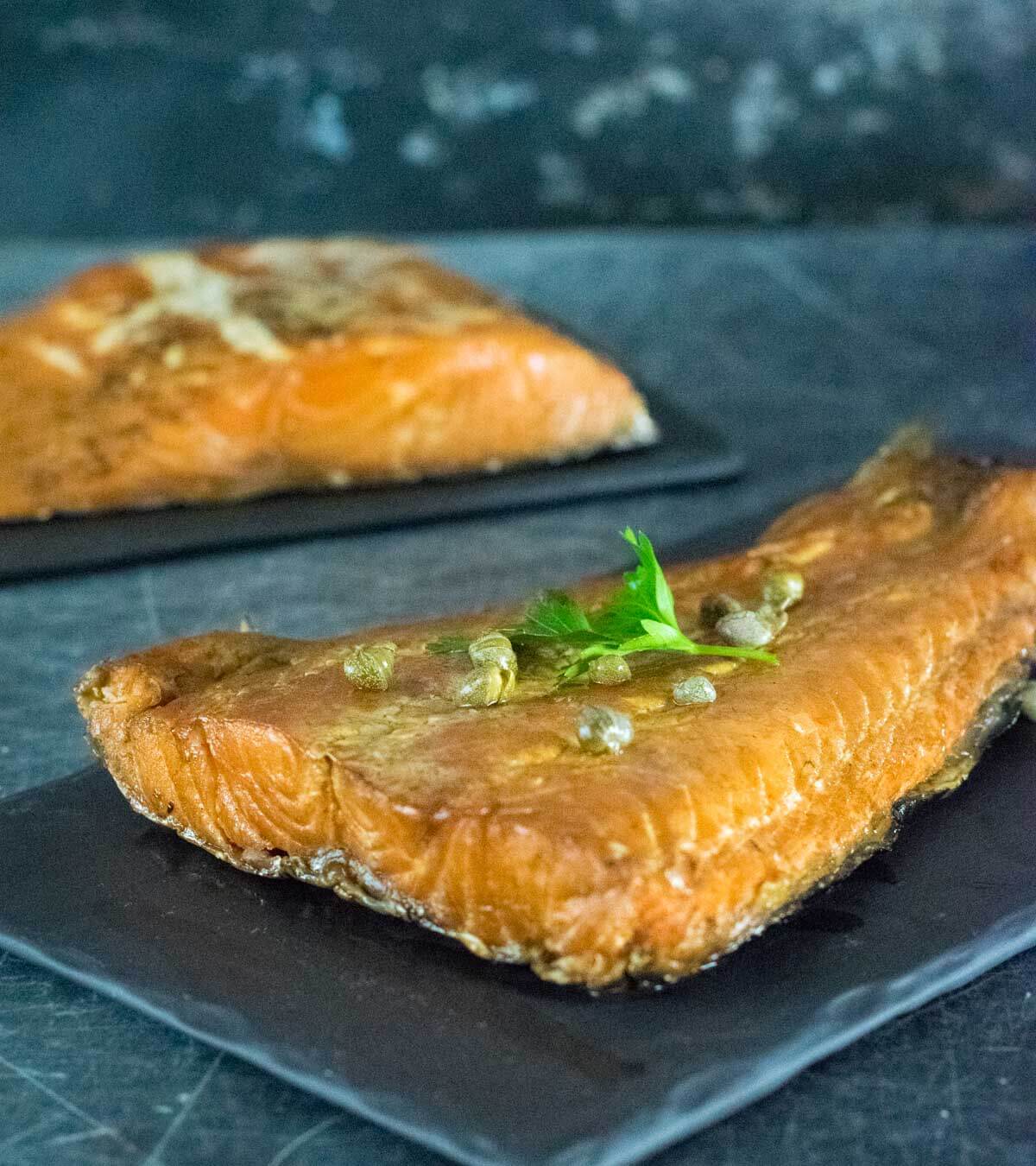
How to Cure Salmon
Before salmon is smoked is needs to cure. Curing removes liquid from the fillet and helps preserve the meat. The seasoning mixture also adds flavor. Most commonly, the cure is a sweet and salty mixture of kosher salt, brown sugar, and black pepper.
To begin, place plastic wrap across a baking pan and liberally add enough cure to coat the entire side of the fillet. Place the salmon on the cure and sprinkle more cure on top of the fish, so that it is fully encased in seasoning. Wrap tightly with the plastic wrap and place a second baking sheet on top, weighed down with cans (or other weights) to ensure it presses into the salmon. The salmon should cure in the fridge for 12 hours.
When done curing be sure to rinse the fillet under cold water to remove all of the seasonings. Don't worry, the flavor will be infused into the meat. The salmon should be returned to the refrigerator uncovered for three hours to dry the exterior.
How to smoke salmon
Salmon is smoked at a lower temperature than traditional BBQ. Most commonly smoked BBQ meats cook around 225 degrees, but I cook salmon around 160-170 degrees. I aim my smoker for 170, but I'm happy with anywhere in that range.
The salmon can be set directly on the racks of your smoker, skin side down. Smoke for approximately 3 hours, or until the meat reaches 150 degrees. It is important to note the smoking time will vary depending on how thick your fillets are.
Salmon Dry Rubs
You can add additional flavor to your fish by adding a seasoning rub prior to smoking. This can be as simple or complex as you desire. Here are a few options:
- Fresh ground black pepper - Incredibly simple, but oh so good!
- Old Bay Seasoning - The bright lemony flavor really cuts through the smoke.
- Creole seasoning - This is my favorite way to enjoy it. I love the extra kick it adds.
- BBQ Dry Rub - Not a traditional option for smoked salmon, but that doesn't mean it won't still taste great!
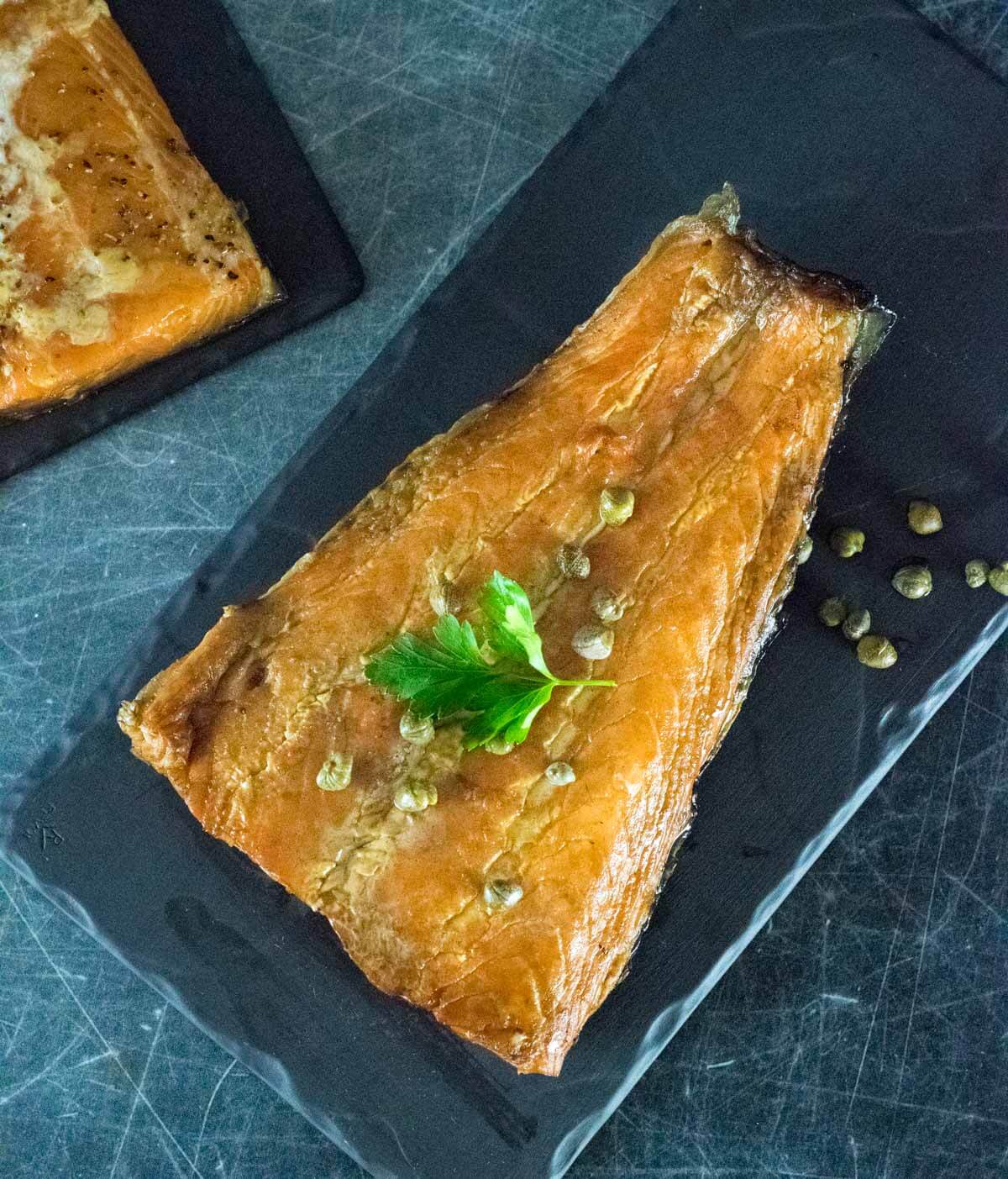
What to do with Smoked Salmon?
Smoked salmon is great to enjoy on its own, and makes a wonderful party appetizer when served as a dip. It is also a flavorful addition to any salad, or great on bagels with cream cheese and capers. I've even been known to make salmon salad sandwiches out of it, similar to egg salad.
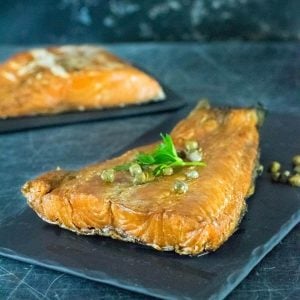
How to smoke salmon
Equipment
- Plastic wrap
- Baking pans
- Alder wood chips
Ingredients
- 1 side of salmon (cut into individual portion with pins removed)
Cure
- 1 cup kosher salt
- 1 cup brown sugar
- 1 tablespoon black pepper
Rub
- 1 tablespoon fresh ground black pepper
Instructions
- Lay plastic wrap across a baking pan and pour half of the cure on the wrap. Place salmon fillet on the cure and sprinkle the other half of the cure on top of the salmon, ensuring the meat is fully covered.
- Wrap the salmon tightly in plastic wrap and set a second baking sheet on top. Weigh down the baking sheet to press firmly onto the salmon, then place in the refrigerator for 12 hours.
- Remove salmon from the fridge and discard the plastic wrap. Rinse salmon under cold water to remove the seasonings, then pat dry and set back on the baking sheet and return to the refrigerator for up to 3 hours to allow the exterior to dry.
Smoking
- Add an optional seasoning rub to the salmon if desired, such as black pepper.
- Preheat your smoker to 165 degrees, aiming to keep it between 160-170. Add wood chips.
- Place salmon directly on the rack, skin side down. Insert a meat thermometer into the thickest part of the fillet and smoke until the salmon reaches 150 degrees. The cook time will vary depending on the thickness of the fillet, but plan for 3-4 horus.


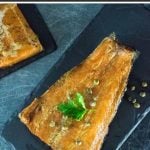
Joycelyn
Love smoked salmon especially done the Indigenous way but yours looks to be is a great way to do it too so will definitely give it a go.
That said, with the shortage of wild salmon there's been these last few year thanks to fish farm salmon escaping their netted pens and infecting wild salmon with diseases, I would never suggest a person buy farm salmon if they can't afford wild salmon which are riddled with disease as that's encouraging fish farms to continue to exist while fishermen/fisherwomen and wild fisheries have been trying to have them eliminated before the wild salmon no more.
As will all creatures of this earth, we humans have a great record of causing the extinction of many of them, one can only hope the next one won't be wild salmon.